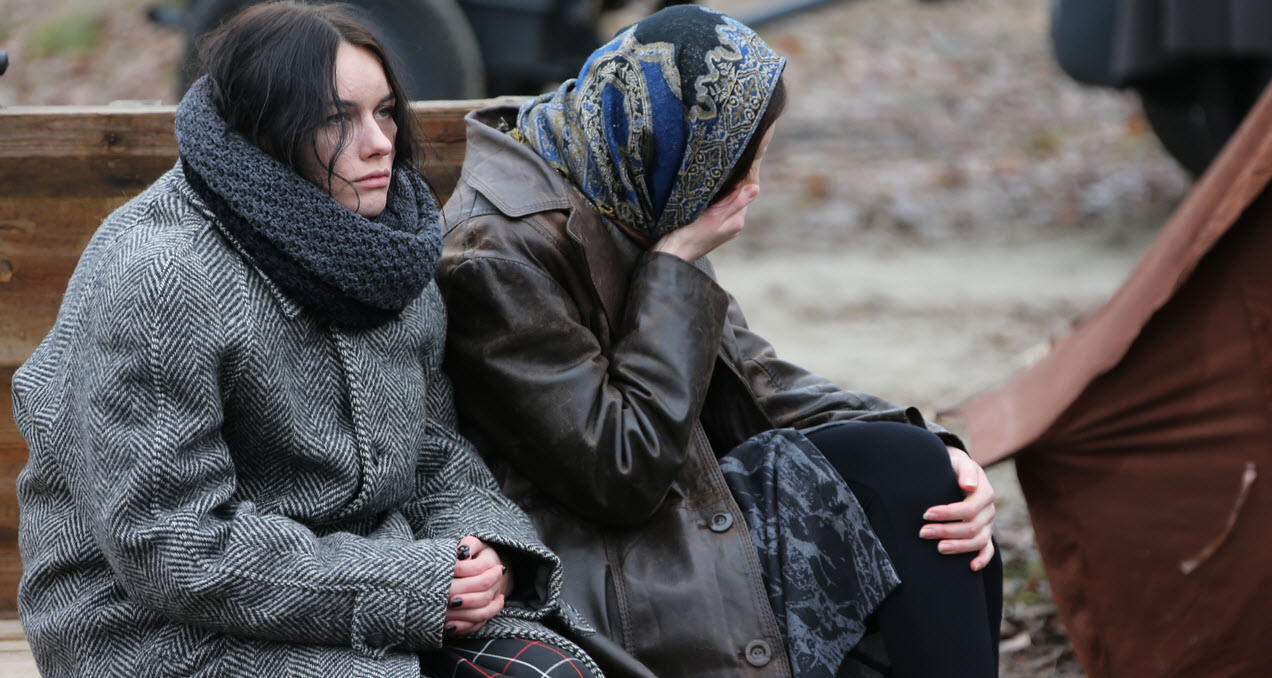| By Rebecca Parks |
Like most people, I woke up to the news of the Russian invasion of Ukraine on February 24, 2022, with shock and horror. As the troops advanced, the civilian population fled; in 10 days, more than 1.5 million Ukrainians had crossed the border into neighboring countries. By March 15, the number had topped 3 million. The United Nations described the situation as the biggest refugee crisis in Europe since World War II.
The tidal wave of people pouring across the borders has presented logistical and political problems for the host countries—particularly Poland, which has received a majority of the refugees. The challenge of absorbing so many people in such a short amount of time has put a strain on resources, as the newly arrived come with great need for food, shelter, employment, and medical assistance. The crisis also has sparked an international political debate, as countries consider who should offer help and how much, with politicians scrambling to establish policies to address the situation.
The UN’s comparison of the current crisis to what occurred before, during, and after World War II is apt, as can readily be seen in the newest module of the Gale Case Studies program: Refugees and Migration. This curated collection of primary sources draws from the Gale Primary Sources archive Refugees, Relief, and Resettlement: Forced Migration and World War II to illuminate broader topics in migration research, such as statelessness, refoulement (the practice of sending refugees back to a country where they are likely to face persecution), international responsibility for the displaced, hostility toward refugees, predicaments of national origins when nation-states dissolve, and strategies to incorporate migrants.
The primary sources are organized into case studies, with each case study focused on a particular topic. For example, researchers can learn about the tragic examples of European Jewish refugees attempting to escape the rise of Nazism for the safety of Cuba and Palestine on the boats St. Louis and Struma, respectively, only to find their way barred by bureaucracy. The passengers of the St. Louis were forced to return to Europe, having never landed in Cuba—many to eventually die in concentration camps. Those on the Struma fared even worse: within 48 hours of being turned away from applying for visas to Palestine, the Struma sank from a suspected torpedo attack, killing everyone on board except for one survivor.
Palestine was a particular focus of European Jews seeking safety, which proved problematic for the British, who were governing Palestine at the time. Three case studies illuminate the politics around accepting Jewish refugees to Palestine in the face of Arab opposition, international debates regarding the establishment of a homeland for Jews, and the role of anti-Semitism in Europe as a driver of Jewish migration to Palestine.
Two other case studies reveal the issues around incorporating refugees, even when the host country welcomes them. There are case studies on three British programs: the Kindertransport program, which brought refugee children from the continent; and the Balt Cygnet and Westward Ho programs, which recruited displaced persons to Great Britain to help mitigate the British postwar labor shortage. Another case study also looks at the economics of integrating displaced persons—this time looking at the impact made on Germany’s postwar economy by the return of Germans expelled from other countries.
Along with these macroviews into the subject of refugees and migration, other case studies reveal the contribution of individuals to the betterment of refugees and displaced persons. Examples include:
- Fridtjof Nansen (1861–1930), a Norwegian statesman and the first high commissioner to refugees, championed the creation of what would become known as “Nansen Passports,” to provide stateless persons with an identity, agency, and dignity.
- Victor Gollancz (1893–1967), a British-Jewish publisher, worked tirelessly to draw international attention to the suffering of certain communities affected by World War II, specifically persecuted Jews and displaced German refugees.
- Alexandra Tolstoy (1884–1979), daughter of famous Russian writer Leo Tolstoy, advocated against the forced repatriation of anti-Communist Russians who had left the Soviet Union after the Russian Revolution of 1917.
Gale Case Studies: Refugees and Migration is designed with both seasoned researchers and those new to digital literacy in mind. The wealth of primary sources available allows search-savvy students to explore many different angles, while the product’s guided experience provides more direction to those who want it. The product’s learning management system (LMS) integration, as well as the discussion questions that accompany each case study, make it an ideal classroom tool for courses in history, sociology, public policy, political science, Jewish studies, and international studies.
Gale Case Studies: Refugees and Migration joins existing modules Intersectional LGBTQ Issues, Public Health Issues, Political Extremism, Race and Civil Rights, and Women’s Issues.




